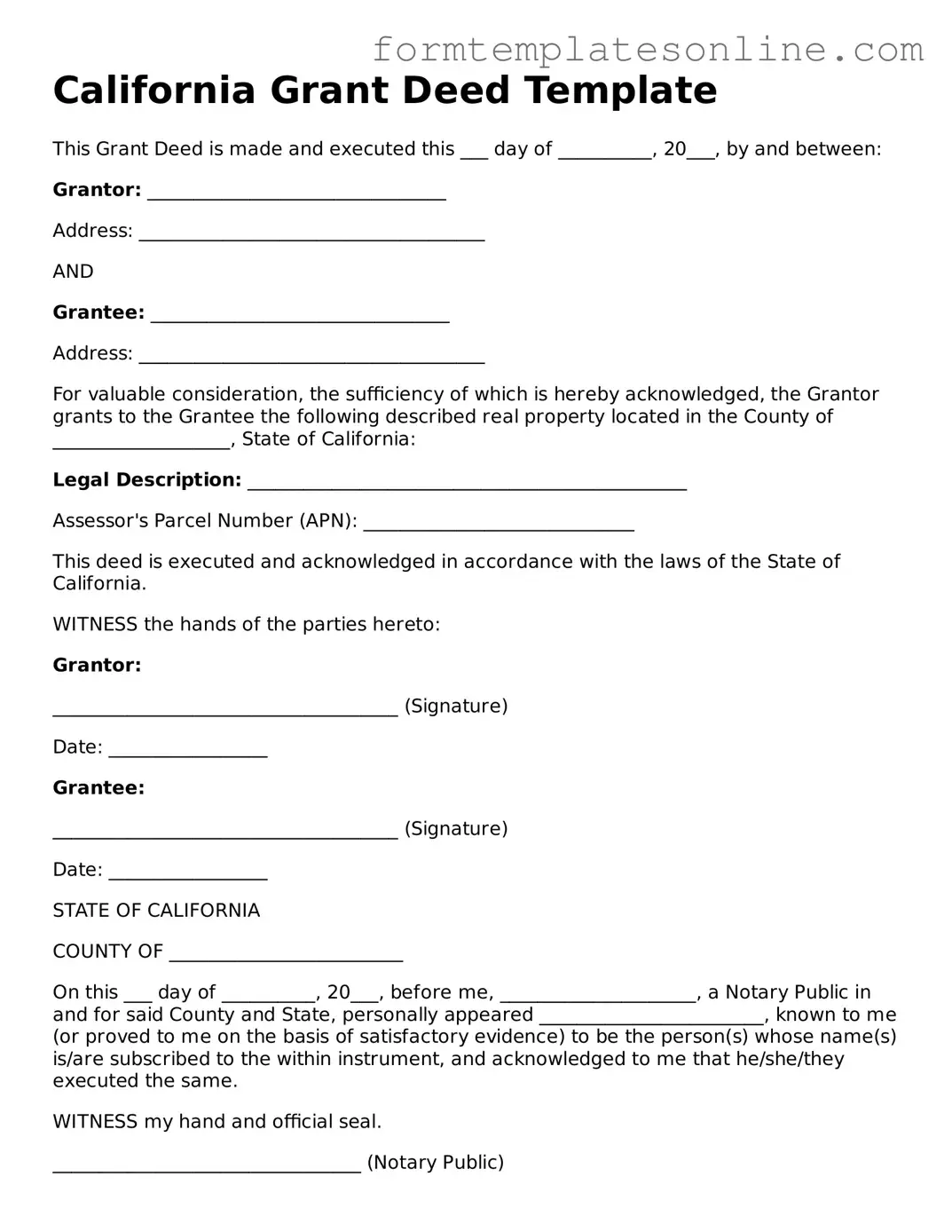California Grant Deed Template
This Grant Deed is made and executed this ___ day of __________, 20___, by and between:
Grantor: ________________________________
Address: _____________________________________
AND
Grantee: ________________________________
Address: _____________________________________
For valuable consideration, the sufficiency of which is hereby acknowledged, the Grantor grants to the Grantee the following described real property located in the County of ___________________, State of California:
Legal Description: _______________________________________________
Assessor's Parcel Number (APN): _____________________________
This deed is executed and acknowledged in accordance with the laws of the State of California.
WITNESS the hands of the parties hereto:
Grantor:
_____________________________________ (Signature)
Date: _________________
Grantee:
_____________________________________ (Signature)
Date: _________________
STATE OF CALIFORNIA
COUNTY OF _________________________
On this ___ day of __________, 20___, before me, _____________________, a Notary Public in and for said County and State, personally appeared ________________________, known to me (or proved to me on the basis of satisfactory evidence) to be the person(s) whose name(s) is/are subscribed to the within instrument, and acknowledged to me that he/she/they executed the same.
WITNESS my hand and official seal.
_________________________________ (Notary Public)
My Commission Expires: ________________
